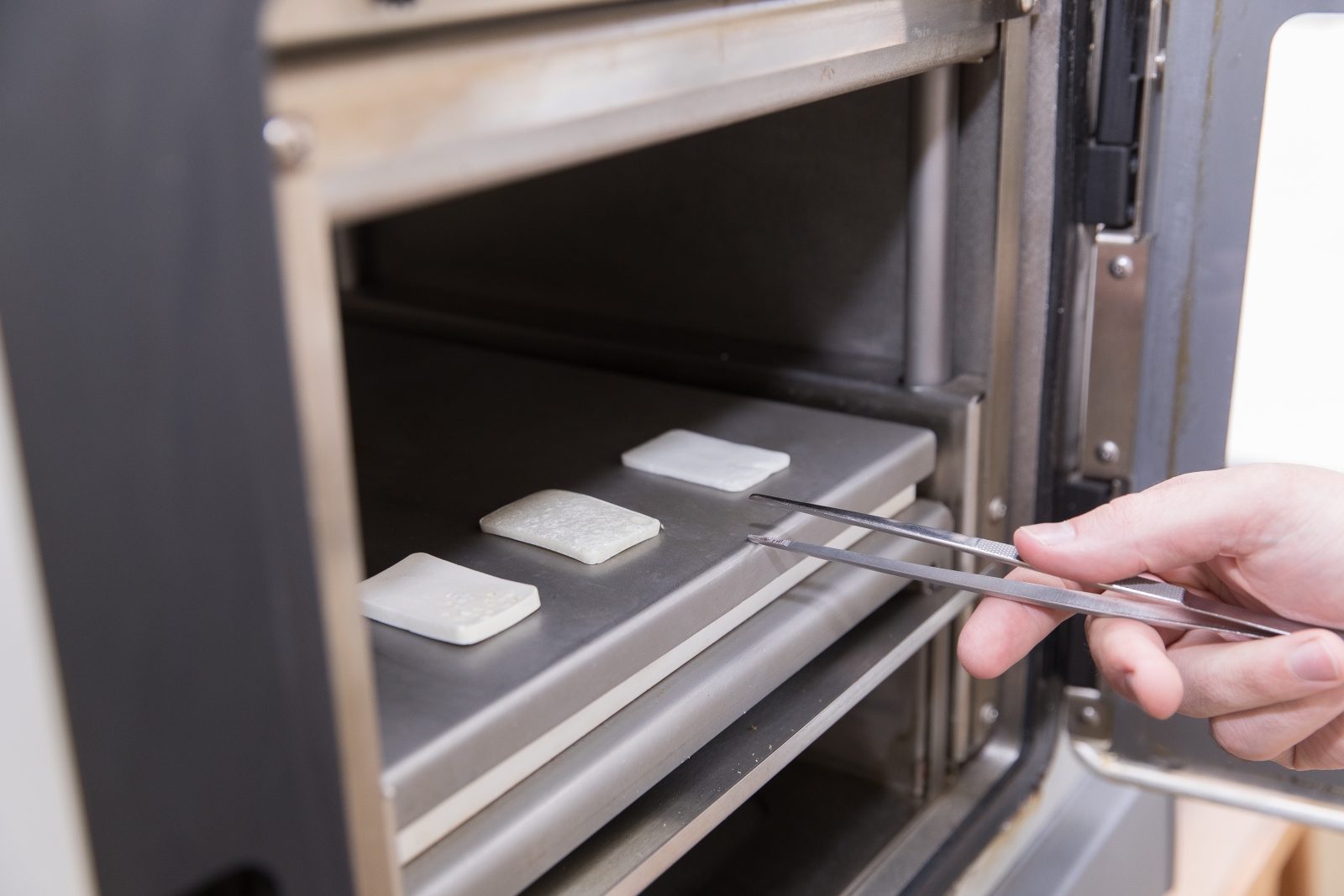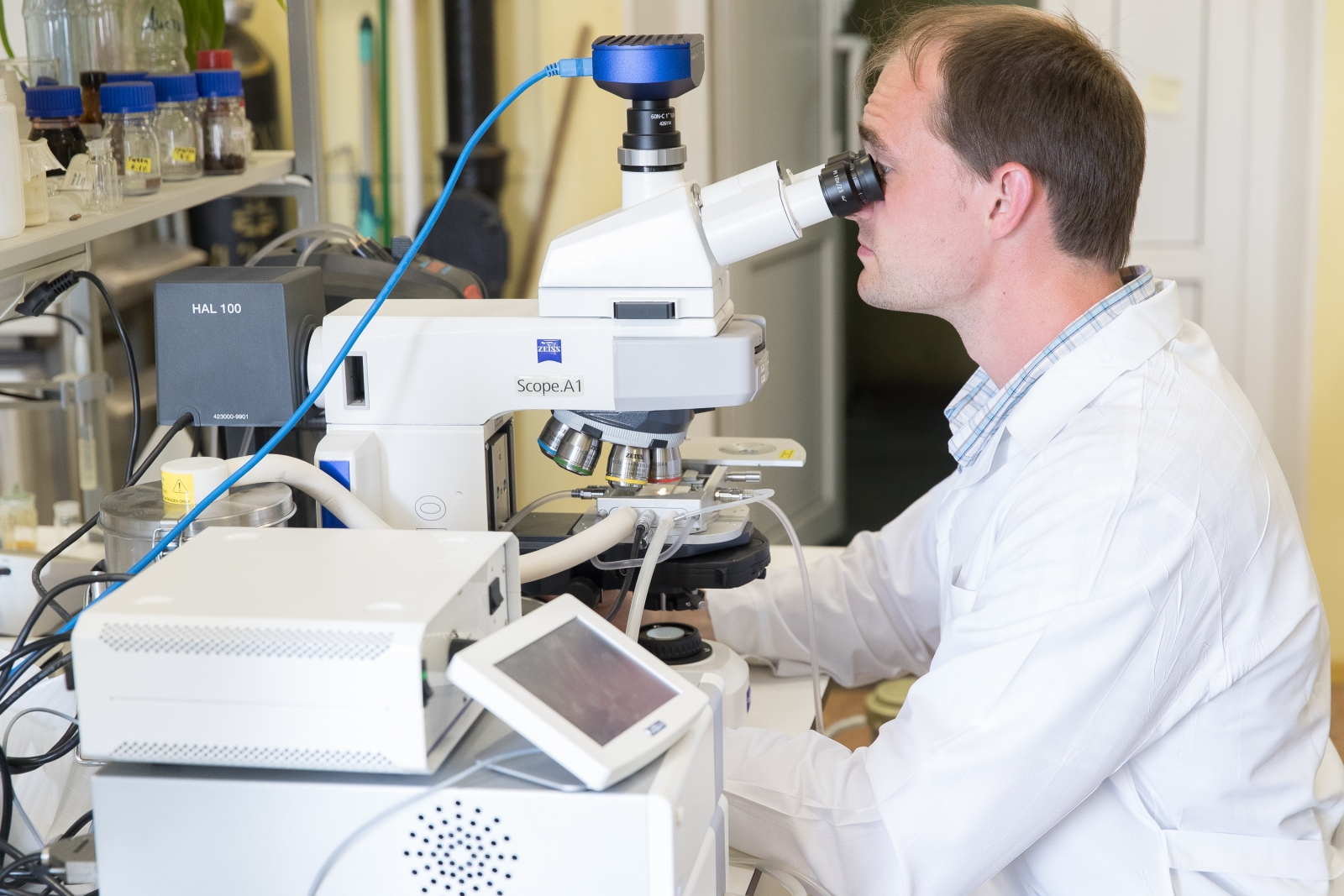
Tissue engineering is the future of medicine. Under Project 5-100, the Polymer Materials for Tissue Engineering and Transplantology Laboratory of Peter the Great St. Petersburg Polytechnic University created unique polymeric materials for medical purposes that repair traumatized human organs.
The laboratory specialists developed a three-dimensional porous material made of collagen and chitosan, an analog of bone tissue. Using this material, the researchers can restore parts of bone lost as a result of trauma or illness.
According to the scientists, this is a completely new medical area not only in Russia but in the whole world. The terminology has not yet been defined. They are currently called “mimicking” materials, as they trick they body. The polymer matrix is implanted into damaged liver tissue, bones or vessels, saturated with the cells of these organs. Since the materials are made from biocompatible components (chitosan and collagen), the body is tricked and does not reject the foreign object. Over time, the matrix decomposes and the artificial tissue is replaced by natural tissue.
"We are not deceiving nature, we are just helping it to cope with a medical problem. Experts are currently debating whether it is better to use an implant or restore an organ. A person with an artificial organ must take medication for the rest of their lifetime to prevent the body from rejecting it. This is not the case for tissue grown from human cells," explains Vladimir Yudin, Head of the Laboratory.
The development of artificial organs for transplantology is an urgent priority of modern medicine. The successful development of this area largely depends on the creation of biocompatible and bioresorbable polymer materials. The scientists of St. Petersburg Polytechnic University have not only developed the technology to create biocompatible materials that stimulate the restoration of natural tissues, but also managed to regulate the resorption time of the materials. It is very important for the implanted materials not to disintegrate before the new fabric is formed.

The results of preclinical studies showed that after a certain period of time, a three-dimensional sponge embedded in a bone starts to become covered with natural bone tissue, while the material itself decomposes. In addition, the developed collagen sponge was studied both in liver tissues and in muscle tissue – the material also stimulated the restoration of the natural tissue of the organs. The latest research results are described in the article "Bioresorption of Porous 3D Matrices Based on Collagen in Liver and Muscular Tissue" published in the journal Cell and Tissue Biology.
The researchers also developed wound covers, prostheses of blood vessels, and suture threads. In vivo preclinical trials were conducted with these materials, and the results proved that they are effective. The materials are recommended for use in tissue engineering and cellular transplantation.
This is a joint project of Peter the Great St. Petersburg Polytechnic University in collaboration with the Institute of Cytology of the Russian Academy of Sciences.



.jpg)
.jpg)